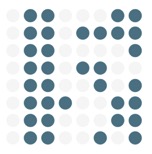Conduct of Defence
The research project presented in this thesis concerns the performance practice of the computer musician. Throughout this thesis I also refer to the computer musician by using the term electronics performer. To fully disclose all conclusions drawn from this research, it is paramount to include actual performance situations in my defence. Since a performance practice is better explained in a performative environment then in written text, I choose to use a lecture-performance as the main form factor of my defence. This lecture-performance will take place at the Royal Conservatory of Brussels on November 16th, 2016 at 14.00.
Although the emphasis of my defence lies on this multimedia event, it’s only a precursor to a performance called ‘[IN]VISIBLE’, during which all drawn conclusions will be presented in a concert situation. ‘[IN]VISIBLE’ will take place at Concertgebouw Brugge on December 21st, 2016 at 20.00. An interview will proceed the concert at 19.15.
The presented paper is to be regarded as a prelude to both the lecture-performance and the concert. Apart from revealing my research trajectory, it can be seen as a summary of all topics that will be extensively elaborated upon during my lecture-performance. Furthermore, it serves as a guide to the accompanying portfolio of scores, software, audio and video recordings, produced across the duration of this research project. During the lecture-performance, all performance related aspects will be made clear through various practical examples.
The research project presented in this thesis concerns the performance practice of the computer musician. Throughout this thesis I also refer to the computer musician by using the term electronics performer. To fully disclose all conclusions drawn from this research, it is paramount to include actual performance situations in my defence. Since a performance practice is better explained in a performative environment then in written text, I choose to use a lecture-performance as the main form factor of my defence. This lecture-performance will take place at the Royal Conservatory of Brussels on November 16th, 2016 at 14.00.
Although the emphasis of my defence lies on this multimedia event, it’s only a precursor to a performance called ‘[IN]VISIBLE’, during which all drawn conclusions will be presented in a concert situation. ‘[IN]VISIBLE’ will take place at Concertgebouw Brugge on December 21st, 2016 at 20.00. An interview will proceed the concert at 19.15.
The presented paper is to be regarded as a prelude to both the lecture-performance and the concert. Apart from revealing my research trajectory, it can be seen as a summary of all topics that will be extensively elaborated upon during my lecture-performance. Furthermore, it serves as a guide to the accompanying portfolio of scores, software, audio and video recordings, produced across the duration of this research project. During the lecture-performance, all performance related aspects will be made clear through various practical examples.
[IN]VISIBLE
[IN]VISIBLE finds its main inspiration in tinnitus, a condition I’m dealing with since 2009. Throughout the performance the different stages of this condition are translated into an electro-acoustic, multi-medial frame. From the disorientation that strikes at the initial ‘attack’ to experimental electroshock-therapy, the paralysing tranquillisers to the eventual cure, every aspect finds its own shape in an often hard, raw, minimal musical language where the use of glitches, artefacts, micro loops and other electronic adaptations play an important roll. It’s in this detachment of the classical, acoustical environment that [IN]VISIBLE finds a new reality in which this apparently virtual but very present condition finds its resolution.
In context of my PhD research “Towards an Artistic Performance Strategy for Computer Musicians”, [IN]VISIBLE investigates and reformulates several paradigms that are intrinsic to electronics performance. It emphasises the evolution of the computer musician, from invisible, disembodied entity to full-fledged multimedial performer and aims to establish an intelligible communication model between the electronics performer and the audience.
CREDITS: Benjamin Van Esser & ChampdAction
[IN]VISIBLE | final project PhD in the Arts | Benjamin Van Esser | VUB/KCB/Brussels Arts Platform
PRODUCTION: ChampdAction in coproduction with Concertgebouw Brugge and Brussels Arts Platform
concept, music, visuals: Benjamin Van Esser
musicians: Gabi Sultana [piano], Tom De Cock [percussion], Vincent Caers [percussion, live electronics], Lieselot De Wilde [soprano], Benjamin Van Esser [live electronics]
visuals: Vincent Jacobs
sound engineer: Roel Das
[IN]VISIBLE finds its main inspiration in tinnitus, a condition I’m dealing with since 2009. Throughout the performance the different stages of this condition are translated into an electro-acoustic, multi-medial frame. From the disorientation that strikes at the initial ‘attack’ to experimental electroshock-therapy, the paralysing tranquillisers to the eventual cure, every aspect finds its own shape in an often hard, raw, minimal musical language where the use of glitches, artefacts, micro loops and other electronic adaptations play an important roll. It’s in this detachment of the classical, acoustical environment that [IN]VISIBLE finds a new reality in which this apparently virtual but very present condition finds its resolution.
In context of my PhD research “Towards an Artistic Performance Strategy for Computer Musicians”, [IN]VISIBLE investigates and reformulates several paradigms that are intrinsic to electronics performance. It emphasises the evolution of the computer musician, from invisible, disembodied entity to full-fledged multimedial performer and aims to establish an intelligible communication model between the electronics performer and the audience.
CREDITS: Benjamin Van Esser & ChampdAction
[IN]VISIBLE | final project PhD in the Arts | Benjamin Van Esser | VUB/KCB/Brussels Arts Platform
PRODUCTION: ChampdAction in coproduction with Concertgebouw Brugge and Brussels Arts Platform
concept, music, visuals: Benjamin Van Esser
musicians: Gabi Sultana [piano], Tom De Cock [percussion], Vincent Caers [percussion, live electronics], Lieselot De Wilde [soprano], Benjamin Van Esser [live electronics]
visuals: Vincent Jacobs
sound engineer: Roel Das
COALESCE
The CD Coalesce includes 6 original electro-acoustic compositions which were created in the light of this research project. The official release will take place on November 16th, 2016, during my lecture-performance, which includes performances of most titles on the CD. Previews of these compositions are found in the chapter ‘Coalesce’ and in the presented portfolio (Portfolio/Media/Audio/Coalesce.zip)
Coalesce is a cycle of compositions which investigates the role of the computer musician in live performance situations. Throughout this cycle, which is comprised of 6 electro-acoustic compositions, the computer musician slowly evolves from a disembodied, invisible entity, only manifesting itself through computer programming, to an embodied performer, playing ‘the instrument’ in an on-stage performance environment. Hereby, this cycle doesn’t only attempt to demonstrate the importance of the computer musician’s presence on stage during electro-acoustic performances, it also aims to establish a notion of artistry, originating from and presented by the computer musician, in order to optimise performer-audience communication.
CREDITS: Benjamin Van Esser & ChampdAction
Coalesce | CD recording | Benjamin Van Esser | ChampdAction | VUB | KCB | Brussels Arts Platform | deSingel
music: Benjamin Van Esser
musicians: Takao Hyakutome [violin], Vincent Caers [percussion], Yutaka Oya [piano], Andy Dhondt [alto saxophone], Koen Dries* [alto saxophone], Benjamin Van Esser [piano, electronics]
Recorded at Studio ChampdAction | March 2016 | Istvan Leel-Össy
Edited by Benjamin Van Esser and Istvan Leel-Össy
Mastered by Serge Verstockt, Roel Das and Benjamin Van Esser
ChampdAction/Recordings/6
* PhD fellowship of the Research Foundation - Flanders (FWO)
The CD Coalesce includes 6 original electro-acoustic compositions which were created in the light of this research project. The official release will take place on November 16th, 2016, during my lecture-performance, which includes performances of most titles on the CD. Previews of these compositions are found in the chapter ‘Coalesce’ and in the presented portfolio (Portfolio/Media/Audio/Coalesce.zip)
Coalesce is a cycle of compositions which investigates the role of the computer musician in live performance situations. Throughout this cycle, which is comprised of 6 electro-acoustic compositions, the computer musician slowly evolves from a disembodied, invisible entity, only manifesting itself through computer programming, to an embodied performer, playing ‘the instrument’ in an on-stage performance environment. Hereby, this cycle doesn’t only attempt to demonstrate the importance of the computer musician’s presence on stage during electro-acoustic performances, it also aims to establish a notion of artistry, originating from and presented by the computer musician, in order to optimise performer-audience communication.
CREDITS: Benjamin Van Esser & ChampdAction
Coalesce | CD recording | Benjamin Van Esser | ChampdAction | VUB | KCB | Brussels Arts Platform | deSingel
music: Benjamin Van Esser
musicians: Takao Hyakutome [violin], Vincent Caers [percussion], Yutaka Oya [piano], Andy Dhondt [alto saxophone], Koen Dries* [alto saxophone], Benjamin Van Esser [piano, electronics]
Recorded at Studio ChampdAction | March 2016 | Istvan Leel-Össy
Edited by Benjamin Van Esser and Istvan Leel-Össy
Mastered by Serge Verstockt, Roel Das and Benjamin Van Esser
ChampdAction/Recordings/6
* PhD fellowship of the Research Foundation - Flanders (FWO)
Portfolio
The content of the presented portfolio can be found all over this website. A single download of the complete portfolio can be found here. It contains scores, software, pictures, video and audio recordings produced in the light of this research project. Some files need specific software to open them:
.als and alp. files can be opened with Ableton Live (www.ableton.com)
.maxpat files can be opened with Max (www.cycling74.com)
.amxd files can be opened with Max For Live in Ableton Live (www.ableton.com)
All involved software is downloadable for both Windows and Apple machines on the developers’ websites. The only exception is ‘Control.app’ (see chapter ‘Instrument’) ,which is only accessible on Apple computers.
Throughout this site, tooltips and footnotes provide extra information on text and pictures. Simply hover the cursor over a picture or footnote icon (1) to reveal it.
The content of the presented portfolio can be found all over this website. A single download of the complete portfolio can be found here. It contains scores, software, pictures, video and audio recordings produced in the light of this research project. Some files need specific software to open them:
.als and alp. files can be opened with Ableton Live (www.ableton.com)
.maxpat files can be opened with Max (www.cycling74.com)
.amxd files can be opened with Max For Live in Ableton Live (www.ableton.com)
All involved software is downloadable for both Windows and Apple machines on the developers’ websites. The only exception is ‘Control.app’ (see chapter ‘Instrument’) ,which is only accessible on Apple computers.
Throughout this site, tooltips and footnotes provide extra information on text and pictures. Simply hover the cursor over a picture or footnote icon (1) to reveal it.
- footnote example





